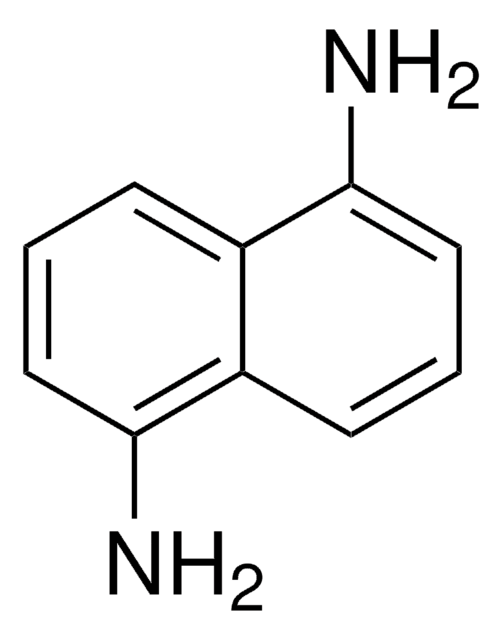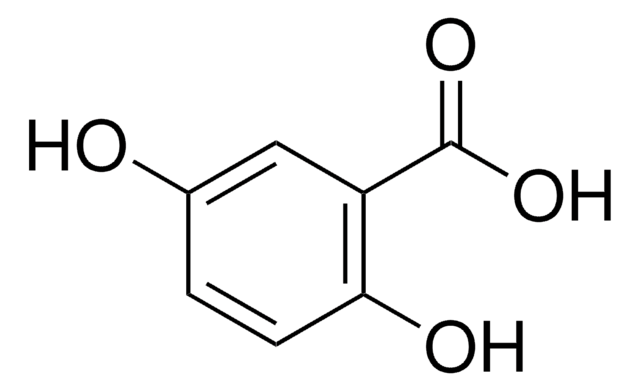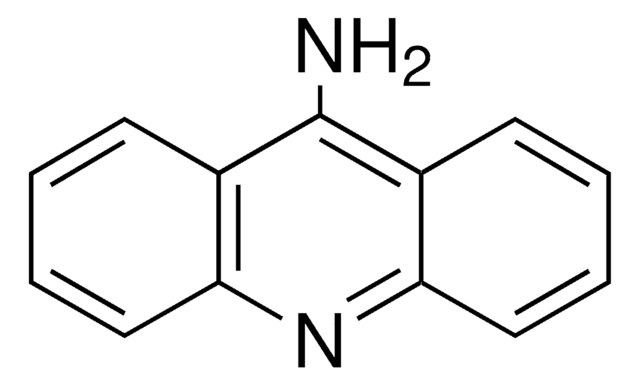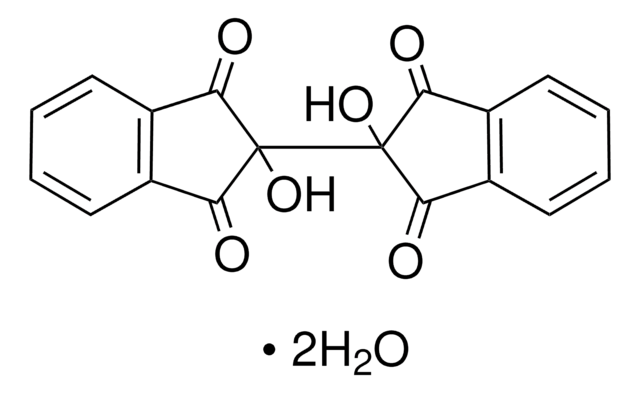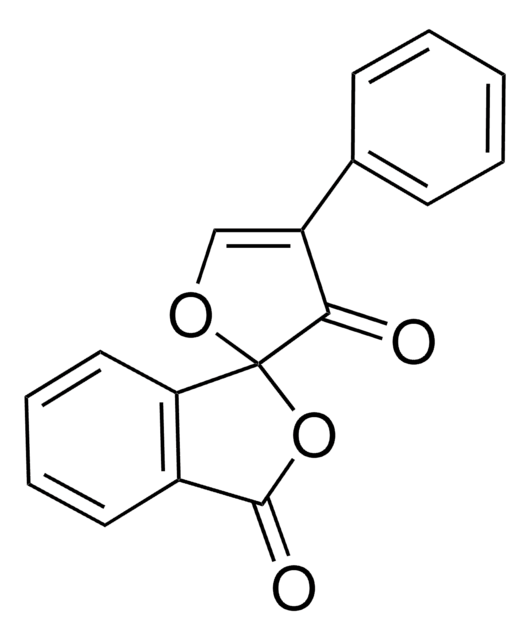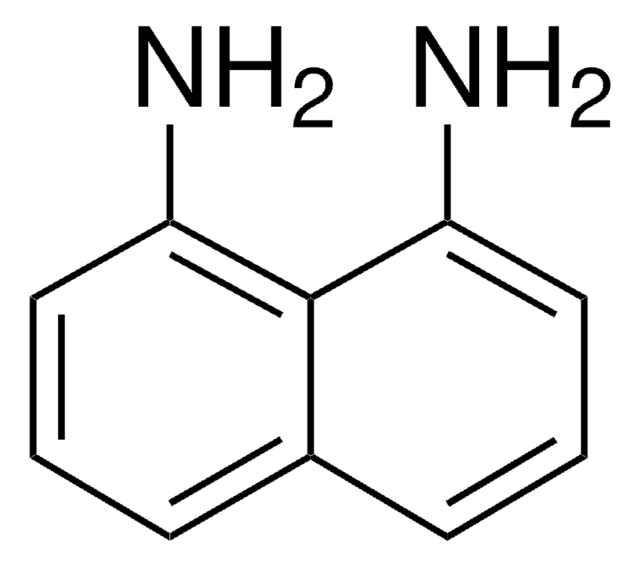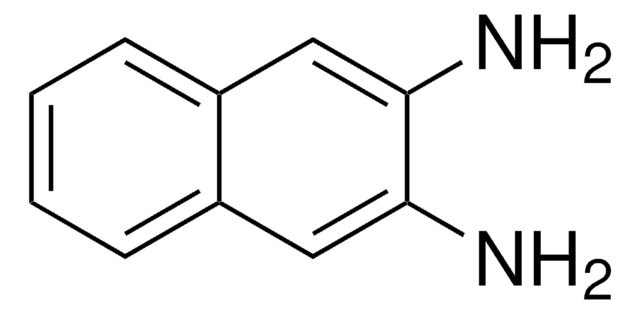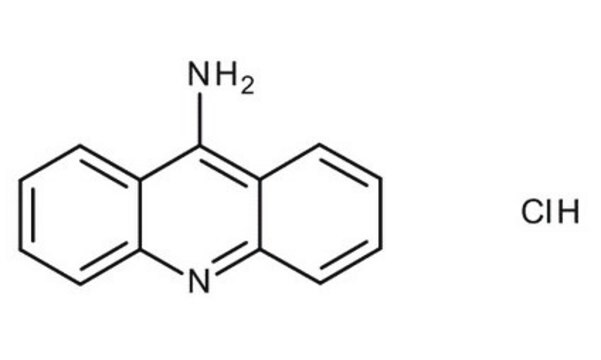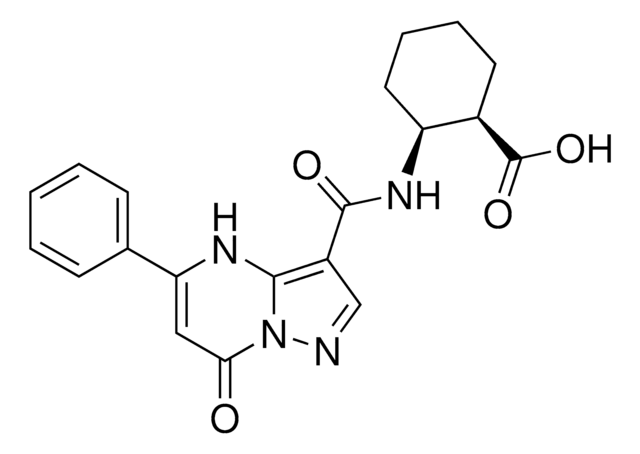Kluczowe dokumenty
56451
1,5-Diaminonaphthalene
matrix substance for MALDI-MS, ≥99.0% (HPLC)
Synonim(y):
1,5-DAN, 1,5-Naphthalenediamine, NSC 401110
About This Item
Polecane produkty
klasa czystości
matrix substance for MALDI-MS
Poziom jakości
Próba
≥99.0% (HPLC)
skład
carbon content, 75.92% (theory)
hydrogen content, 6.37% (theory)
nitrogen content, 17.71% (theory)
klasy chemiczne analitów
oligonucleotides, peptides
metody
MALDI-MS: suitable
mp
185-187 °C (lit.)
ślady kationów
Ba: ≤5.0 mg/kg
Ca: ≤20 mg/kg
Cd: ≤5.0 mg/kg
Co: ≤5.0 mg/kg
Cr: ≤5.0 mg/kg
Cu: ≤5.0 mg/kg
K: ≤10 mg/kg
Mg: ≤5.0 mg/kg
Mn: ≤5.0 mg/kg
Na: ≤10 mg/kg
Ni: ≤5.0 mg/kg
Pb: ≤5.0 mg/kg
Zn: ≤5.0 mg/kg
ciąg SMILES
Nc1cccc2c(N)cccc12
InChI
1S/C10H10N2/c11-9-5-1-3-7-8(9)4-2-6-10(7)12/h1-6H,11-12H2
Klucz InChI
KQSABULTKYLFEV-UHFFFAOYSA-N
Szukasz podobnych produktów? Odwiedź Przewodnik dotyczący porównywania produktów
Powiązane kategorie
Opis ogólny
Zastosowanie
Opakowanie
Komentarz do analizy
produkt powiązany
Hasło ostrzegawcze
Warning
Zwroty wskazujące rodzaj zagrożenia
Zwroty wskazujące środki ostrożności
Klasyfikacja zagrożeń
Acute Tox. 4 Oral - Aquatic Acute 1 - Aquatic Chronic 1 - Carc. 2 - Skin Sens. 1
Kod klasy składowania
11 - Combustible Solids
Klasa zagrożenia wodnego (WGK)
WGK 2
Temperatura zapłonu (°F)
438.8 °F - DIN 51758
Temperatura zapłonu (°C)
226 °C - DIN 51758
Wybierz jedną z najnowszych wersji:
Certyfikaty analizy (CoA)
Nie widzisz odpowiedniej wersji?
Jeśli potrzebujesz konkretnej wersji, możesz wyszukać konkretny certyfikat według numeru partii lub serii.
Masz już ten produkt?
Dokumenty związane z niedawno zakupionymi produktami zostały zamieszczone w Bibliotece dokumentów.
Klienci oglądali również te produkty
Protokoły
A short abstract on a method using QuEChERS and GC/MS/MS for determination of fipronil & fipronil sulfone.
Nasz zespół naukowców ma doświadczenie we wszystkich obszarach badań, w tym w naukach przyrodniczych, materiałoznawstwie, syntezie chemicznej, chromatografii, analityce i wielu innych dziedzinach.
Skontaktuj się z zespołem ds. pomocy technicznej